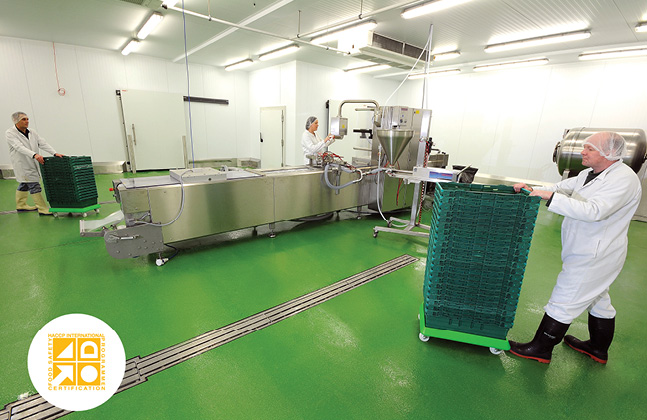Carrying on from last week’s blog post on sourcing a HACCP International certified production line at Gulfood Manufacturing 2015, this week we look at HACCP International’s guidance on flooring for the food and beverage industry.
The regulatory body’s guidelines emphasise the importance of seamless and impervious floors, as joints, grout lines and gaps can become breeding sites for bacteria, fungi, mould and mildew. A seamless surface will help the cleaning regime quickly wash any unwanted substances out of the area.
Traditional food and beverage flooring materials such as thermoplastic coverings, terrazzo, epoxy resins and polyurethane screeds all meet HACCP International’s criteria thanks to the seamless, non-absorbent and easy-to-clean finish they create.
It is important to ensure that the floor is able to maintain these properties for an extended period of time, as otherwise a compliant finish could be compromised and degraded by the site’s workload and no longer able to call itself either seamless or impervious.
Drainage Criteria
To meet the HACCP International standard, floors also need to allow for drainage that facilitates the fast and effective removal of excess liquid and slippery contaminants from the area.
To meet this benchmark, easily cleanable stainless steel drainage can be incorporated into the floor plan. When designing the drainage system the floor needs to be laid to a fall, this avoids the water pooling and means that waste liquid flows in the right direction. The seamless nature of polyurethane flooring is a drainage advantage, as the unwanted water, liquids, oils and greases won’t be impeded from moving towards the drainage channel.
An expansion joint, installed on either side of a drainage channel, will counteract the fact that the stainless steel drain will have a different coefficient of movement to the surrounding coating. Without this expansion joint the two materials will struggle to expand and contract next to each other when faced with temperature fluctuations and a crack could appear along the edge of the drainage channel. A crack like this could lead to many problems, from contamination build up to water ingress that breaks down the concrete – and again it would spoil the seamless finish, which means that it won’t adhere to the HACCP standard.
To find out more about the HACCP International Certified flooring for food and beverage facilities, head to stand A2-45 in Hall 2 of Gulfood Manufacturing.






